 ~ Canaan Connexion
~
~ Canaan Connexion
~ 
Enviro-watch
Here in the country where urban and rural meet, we are concerned about the
environment around us. We tend to take it for granted. We may not be able
to change the world but we can try to change the world around us. It starts at
home and everyone of us can do something about it. This page is meant to
focus on some of the issues and stories that affect our environment... from the
water we drink, to what we put in our land and how we treat all living things around us.
|
Local organizations |
|
|
Amphibian Conservation Club (A.C.C.) (A frog's story....) It started in April 2003, when a kid, who had already formed an Amphibian Conservation Club (A.C.C.) the previous Fall, set out to explore Petrie Island. Eleven year old, Gabrielle, the founder, wanted to adopt our habitat and found out through Their goal was to learn all they could about amphibians so that they could translocate our species and friends successfully to our new habitat that offered many of the same features and more. |
|
|
Clarence-Rockland
Environmental Society The Clarence-Rockland Environmental Society (CRES) is a group of residents from all parts
of the municipality who want to raise environmental awareness and protection. They gathered for the first time
in the spring of 2003 and continue to meet every 4th Tuesday of the month at the Rockland bandstand hall at Parc
Simon, near J-M Lalonde Arena. |
|
|
Click here to see Clarence-Rockland's refuse 'n recycling news |
|
|
Ottawa-Carleton Wlidlife Centre Ottawa-Carleton Wildlife Centre closes rehabilitation facility/hotline service OTTAWA, Nov. 29, 2002 – The Board of Directors of the Ottawa-Carleton Wildlife Centre The Board blames actions by the Ontario Ministry of Natural Resources (OMNR) and a lack of support from the City of Ottawa’s Emergency & Protective Services (EPS) staff for the loss of what has been a widely used and valued community service for the past 15 years. More... More information about the Wildlife Centre, including a story that suggests "Ottawa
City council seeks return to progressive wildlife service", can be found on the Wildlife Ontario site. If you are having a problem with wildlife you can be sure you are not alone. Although it can be extremely frustrating, it is important to remember there is a solution and it is a TEMPORARY situation. More... |
|
|
Turtle Crossing: If you see these signs along the road,
they have been placed there by Thanks to the dedicated work by Rockland's "Turtle Lady", Michel Andre-St.Cyr,
the group was established in the fall of 1999, to care for The organization could use volunteers and donations for their Turtle
Care Centre. |
|
|
This Web site is privately run and offers advocacy assistance for Ontario's wildlife. It includes assistance to wildlife problems, a message board, a questions and feedback section, news, issues and alerts, resource links, and a link to "Problems with Wildlife, noted above. More... |
|
|
Air Quality Ontario Amphibian Conservation Club (ACC) Canadian Environmental Auditing
Association ClimateArk - Premier Climate Change
Portal Community Nature Watch Composting Council of Canada Environment Canada |
Environmentally
Friendly Cleaning Products Forest Conservation Portal Ontario Ministry of Environment & Energy Ontario Waste Management Association Ottawa
Field-Naturalists' Club Recycling Council of Ontario South Nation Conservation Turtle S.H.E.L.L.
Tortue |
|
|
|
|
Canaan Road - Enviro-Driving Tip: |
|
 Bog to Bog, a project is working with
landowners to protect and link isolated natural areas with a series of forested corridors, is focusing on lands
from Ottawa, east to Voyageur Provincial Park, and north of Highway 417. Participating landowners will help connect
significant natural areas, such as the Alfred Bog, Mer Bleue Bog and the Larose Forest, with a series of forested
corridors.st. More... Bog to Bog, a project is working with
landowners to protect and link isolated natural areas with a series of forested corridors, is focusing on lands
from Ottawa, east to Voyageur Provincial Park, and north of Highway 417. Participating landowners will help connect
significant natural areas, such as the Alfred Bog, Mer Bleue Bog and the Larose Forest, with a series of forested
corridors.st. More...
|
|
 The Eastern Ontario Biodiversity Museum The Eastern Ontario Biodiversity MuseumThe EOBM was the only independent, regionally-based, full-service natural history museum in Ontario, with a focus on exhibits, collections, and research. It became a leader in biodiversity education in Eastern Ontario, through school and public programmes, field outings, and publications. Sadly, the museum closed in 2005 due to a lack of funding support. However, you can still participate in Eastern Ontario biodiversity through the Eastern Ontario Natural History Observer Network and the e-mail "NatureList". Send an e-mail to: mailman-request@thenaturejournal.com. |
|
 Stretching across 1.5 million hectares, from Algonquin Park to the Quebec border to the St Lawrence
River, the Eastern Ontario Model Forest (EOMF)
is no ordinary woods. Stretching across 1.5 million hectares, from Algonquin Park to the Quebec border to the St Lawrence
River, the Eastern Ontario Model Forest (EOMF)
is no ordinary woods.It is a group of dedicated individuals and organizations working together to sustain and ensure the health of the forests of eastern Ontario - now and for the future. This alliance of people concerned with the sustainability of Eastern Ontario forests is truly the backbone of the Eastern Ontario Model Forest. More... |
|
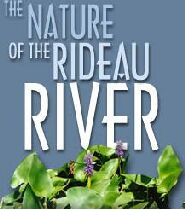 The Nature of the
Rideau River The Nature of the
Rideau RiverThe scientists of the Canadian Museum of Nature and their partners have completed the Rideau River Biodiversity Project. Get in on the action and explore the resources. Find out why biodiversity is important to you. More... |
|
 Promote the judicious use of private lands in Prescott-Russell to ensure sustainability of natural resources. More... |
|
| Deep-sea Fish on the Verge of Extinction Hinterland Who's Who flies again Human activity and the environment Attack of the lawn-eating grubs Giant research balloon launched to study ozone layer Drivers, stop your engines! Gasoline industry and government launch anti-idling campaign Pesticides and cancer Ontario: Immediate access to air pollution information Common pesticide ending up in semen of farmers Weedkiller targeted by city poses risk 2,4-D found in semen and urine of farmers, study reveals Stop trapping squirrels Retailer joins fight to solve orphan problem |
|
| Deep-sea Fish on the Verge of Extinction | |
| By Omid Ghoreishi - Epoch Times Jan 12, 2006 A group of biologists from the Memorial University of Newfoundland say that the number of some deep-sea fish species in the north Atlantic has declined to the extent that the species meet the World Conservation Union (IUCN) criteria for being critically endangered. "Our results indicate that urgent action is needed for the sustainable management of deep-sea fisheries," say the researchers in a paper published in the Scientific journal Nature. The study is focused on five species that live on or near the bottom of the Canadian waters in the northern Atlantic Ocean, namely the roundnose grenadier, onion-eye grenadier, blue hake, spiny eel, and spinytail skate. "This study is unique because we had such a long time series for these species, knew or could infer their generation time, and were able to apply the IUCN criteria," says Jennifer Devine, one of the researchers. "We believe our study is a crucial piece in the growing pile of evidence that fishing in the deep-sea has detrimental and far-reaching effects on the entire deep-sea ecosystem." According to the study, the species have decreased between 87 and 98 percent over only 17 years. Also, the two grenadier species have declined by 93.3 and 99.6 percent over a 26-year period. "No population fluctuates as much as 90% naturally, especially in such a stable |
environment as the deep-sea. Any changes made to halt these population declines would not be evident for several generations — approximately 100 years," says Devine. A decline in the oceanic cod, rays, tuna, and other types of fish due to over-fishing in the 1960s and 1970s caused a shift in commercial fishing to the deep-seas. Devine says prior to the 1970s, deep-ocean trawling on the continental slope was non-existent, but it has become important all over the world as shelf fisheries declined. And this is the reason they believe trawling has had an impact on deep-sea fishes and the deep-sea ecosystem. Because of slow growth, late maturation, long life, and low fertility rates, deep-sea fish are extremely vulnerable to over-fishing. As one of the initiatives to stop the rapid decline of these species, the researchers have suggested the establishment
of "deep-sea protected areas". Devine says that so far, they have seen no sign that their research has caught the attention of the authorities or that there is any action planned to help the situation. |
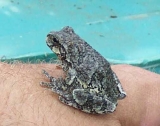 Friends of Petrie Island (FOPI)
that eventually it would be filled in with sand for a future parking lot, part of a beach development. She had
recruited 10 members, ages 7-14 years old, who became part of the Habitat Team and other families from communities
inside and outside the greater Ottawa area who became ACC-Petrie Island Ambassadors.
Friends of Petrie Island (FOPI)
that eventually it would be filled in with sand for a future parking lot, part of a beach development. She had
recruited 10 members, ages 7-14 years old, who became part of the Habitat Team and other families from communities
inside and outside the greater Ottawa area who became ACC-Petrie Island Ambassadors.
 (OCWC) regret to announce that they
will be closing the Moodie Drive wildlife rehabilitation facility, and its Conflict Resolution telephone hotline
service. The Centre finalized its decision at its annual general meeting November 28.
(OCWC) regret to announce that they
will be closing the Moodie Drive wildlife rehabilitation facility, and its Conflict Resolution telephone hotline
service. The Centre finalized its decision at its annual general meeting November 28.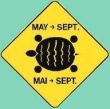



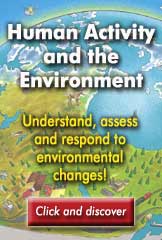
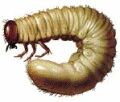 A story
in a 2002 summer issue of the Ottawa Citizen talking about the white grubs that invade our lawns. Here are links
to similar information.
A story
in a 2002 summer issue of the Ottawa Citizen talking about the white grubs that invade our lawns. Here are links
to similar information.

 The Ottawa-Carleton Wildlife Centre is having to find space for about 100 orphaned squirrels and
has placed another 50 with 'foster parents.' Home Depot is joining the campaign to convince homeowners to stop
live-trapping, which adds to the orphan problem.
The Ottawa-Carleton Wildlife Centre is having to find space for about 100 orphaned squirrels and
has placed another 50 with 'foster parents.' Home Depot is joining the campaign to convince homeowners to stop
live-trapping, which adds to the orphan problem.

